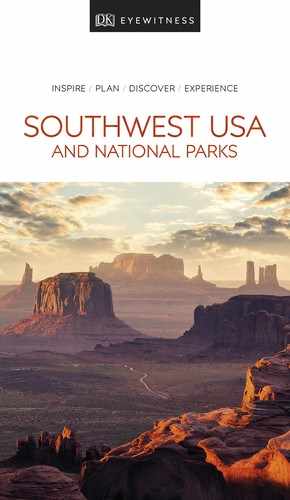A Brief
History

t A 19th-century engraving showing Pueblo peoples dancing.
Ever since the arrival of the first nomadic people in prehistoric times, diverse immigrants have made the Southwest their home. Native American tribes, Hispanic colonizers, Mormon communities, and Anglo-American settlers have given this desert landscape a rich, multicultural heritage.
Ancient Cultures
The earliest known people in the Southwest were the nomadic Clovis culture in New Mexico around 10,000 BC. By AD 100 three dominant cultures had emerged – the Hohokam, Mogollon, and Ancestral Puebloans (also called Anasazi). The Hohokam farmers of southcentral Arizona, forefathers of today’s Tohono O’odham and Pima peoples, created sophisticated irrigation systems in the desert. In southern New Mexico, the Mogollon developed distinctive pottery, particularly in the Mimbres Valley. The Ancestral Puebloans lived in extended family groups, first in below-ground pithouses and later in elaborate pueblos and cliff dwellings in the Four Corners region. These ancient cultures reached their height between 800 and 1250. Large pueblos with round ceremonial chambers called kivas were built at Chaco Canyon and Mesa Verde. But by 1400 these ancient sites were mysteriously abandoned. It is thought the people migrated to new pueblos along the Rio Grande, where their descendants live today. Between 1100 and 1500, the Navajo, who were primarily hunters, and the Apache, who were skillful warriors, arrived in the Southwest from their native homelands, Canada and Alaska.
The Arrival of the Spanish
Driven by dreams of gold and the desire to convert the native population to Christianity, the Franciscan priest Fray Marcos de Niza led the first Spanish expedition into the Southwest in 1539. A year later, Francisco Vázquez de Coronado returned with soldiers and livestock, overwhelming the trading center of Zuni Pueblo. His treatment of the people was brutal, sacking homes and burning villages, as he spent two years searching in vain for the fabled riches of the Seven Cities of Cíbola.
The Colony of New Mexico
Not finding riches, the Spanish lost interest in this region until conquistador and explorer Juan de Oñate established the colony of New Mexico in 1598. It stretched into Arizona, parts of Colorado, and Utah and beyond. Under Governor Don Pedro de Peralta, Santa Fe became the capital in 1610. Colonists seized farmlands and created huge ranches for themselves, the Puebloans resisted, and bloody battles ensued. Rising up in the Pueblo Revolt of 1680, they drove the settlers south across the Rio Grande. But in 1692, Don Diego de Vargas reclaimed Santa Fe, and the Spanish extended their reach in the Southwest throughout the next century.
Anglo-American Settlement
In 1803, Napoleon sold the vast Louisiana Territory to the United States, bringing its border to New Mexico. After a long war, Mexico declared independence from Spain in 1821. That same year, William Becknell led traders from Missouri along the Santa Fe Trail. Wagon trains followed. By the 1840s, the United States had embarked on a vigorous expansion westward. As Anglo settlers encroached on Mexican lands, war broke out in 1846. Two years later, most of the Southwest and California was ceded to the US for $18.25 million in the Treaty of Guadalupe-Hidalgo. The Gadsden Purchase of 1854 brought Southern Arizona into the fold. Meanwhile, Mormon pioneers built settlements in southern Utah and Las Vegas.
Ranchers and Miners
After the Civil War (1861–5), Anglo settlement of the West rapidly increased. Rich lodes of gold, silver, and copper were discovered, and boomtowns flourished at Tombstone, Jerome, Bisbee, and Silver City. In Colorado, the towns of Silverton, Ouray, and Telluride also grew up around the mining industry. Vast areas of the Southwest became huge cattle and sheep ranches. “Range wars” between farmers and ranchers were common, such as the Lincoln County War (1878–81), known for its infamous protagonist Billy the Kid. As Anglo ranchers seized land, the New Mexicans’ tradition of communal land use was overturned and many indigenous farmers lost their livelihoods.
The Long Walk
Native Americans suffered as the government set about clearing more land for settlers. In 1864, more than 8,000 Navajo were forced from their lands and made to march “The Long Walk” of 400 miles (644 km) to a reservation in New Mexico. Many died en route. The Chiricahua Apache continued to fight against forced settlement until the surrender of their leader, Geronimo, in 1886.
The End of the Frontier
By the 1880s, four major railroads crossed the region, bringing new Anglo settlers in search of prosperity. They came believing it was their destiny to expand across the continent and exploit its resources. New industries emerged. The opening of the Grand Canyon Railroad in 1901 brought tourists, and national parks were declared at Mesa Verde, Zion, and Bryce Canyon.
The Atomic Age
The legacy of World War II changed the economic course of the Southwest. Military research and its industrial offshoots led to a post-war population boom. New Mexico’s remote desert areas provided secret research, development, and testing sites for the atomic bomb at Los Alamos and the Trinity test site southeast of Socorro. The Southwest also became a major center for space travel. In 1982, Space Shuttle Columbia landed at White Sands Space Harbor, and the base for the first commercial space flights, Spaceport America, was built in 2011 near Las Cruces.
The Southwest Today
The Southwest continues to be a major center for defense research and development and space travel. In 2018, the Phoenix and Las Vegas metropolitan areas ranked among the nation’s fastest-growing cities. Water supply remains a serious issue in the region, as does the growing number of migrants seeking entry to the US across the Mexican border. Meanwhile, tourists visit the region’s cities and beauty spots in ever-increasing numbers. The national parks encourage a heightened awareness of Native cultures and conservation issues, which will help guard the Southwest’s precious heritage for generations to come.
Did You Know?
Tubac Presidio was the first Spanish settlement built in Arizona in 1752.
Did You Know?
Trinity was the code name for the first detonation of a nuclear weapon.
The Missions
In the late 17th century, Jesuit missionary and explorer Father Eusebio Kino brought beef livestock and seeds for wheat crops to the Pima people of Southern Arizona to help them diversify their agri-culture. By the time he died in 1711, he had established a number of missions across the area, including the churches at Tumacácori and San Xavier del Bac.
Water supply
Enormous dams were built to channel water to the burgeoning cities of the Southwest. Hoover Dam was completed in 1936, the tallest dam in the country at the time, but soon even that proved inadequate. In 1963, Glen Canyon Dam created the huge reservoir of Lake Powell, flooding permanently an area of great beauty and destroying ancient Native ruins.
DISCOVER A Brief History
Timeline of events |

10,000–8,000 BCThe nomadic Clovis people hunt in New Mexico. |
800 BCCorn is brought to the Southwest from Mexico and agriculture begins. |
300 BC–AD 1400Hohokam civilization in southcentral Arizona. |
200 BC–AD 1400Ancestral Puebloan culture in Four Corners region; Mogollon culture in southwestern New Mexico and southeastern Arizona. |
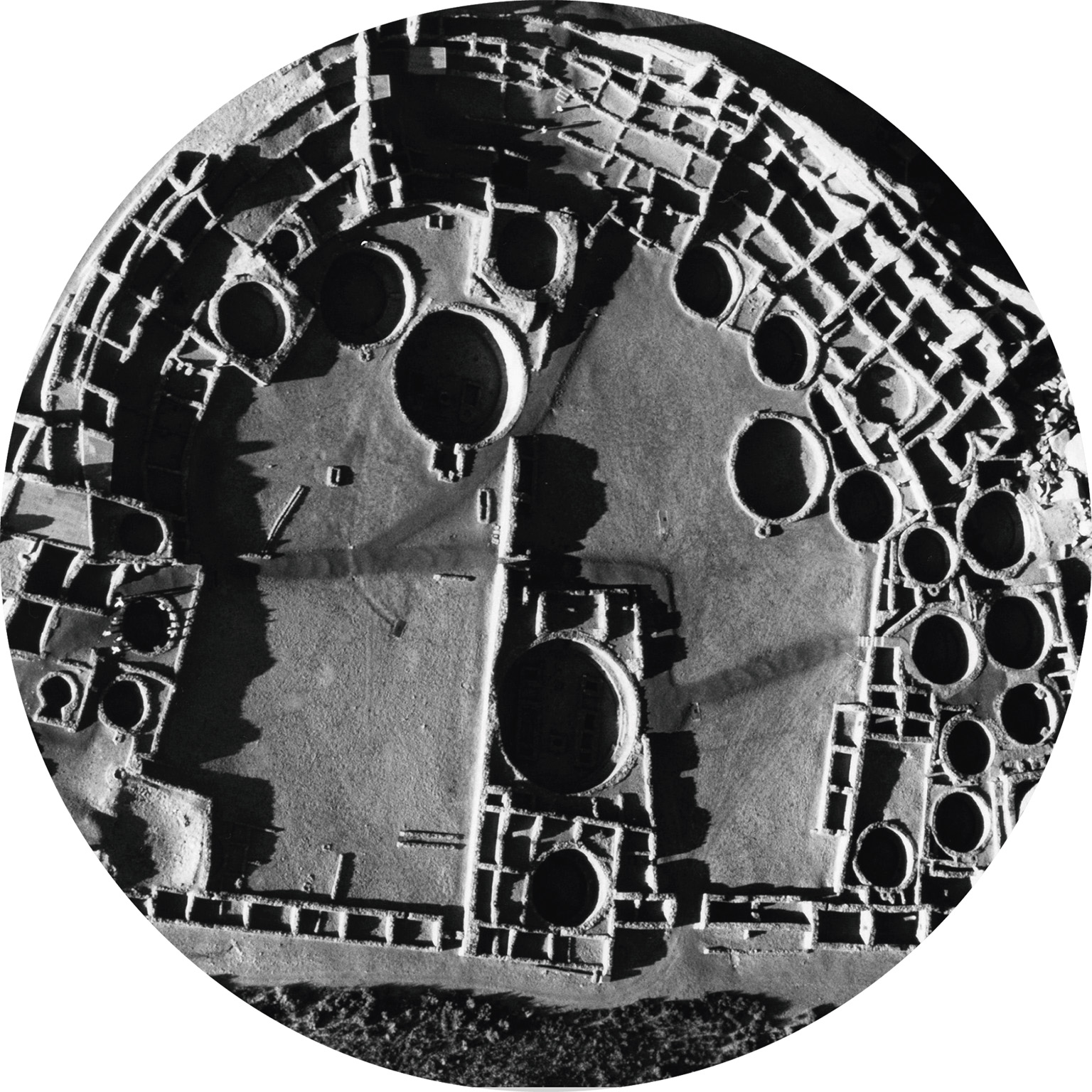
1020Chaco Canyon is at its height as a trading and cultural center. |
1150Acoma Pueblo and Hopi Mesa villages are established. |
c 1250Many ancient sites are mysteriously abandoned; new pueblos are established along Rio Grande. |
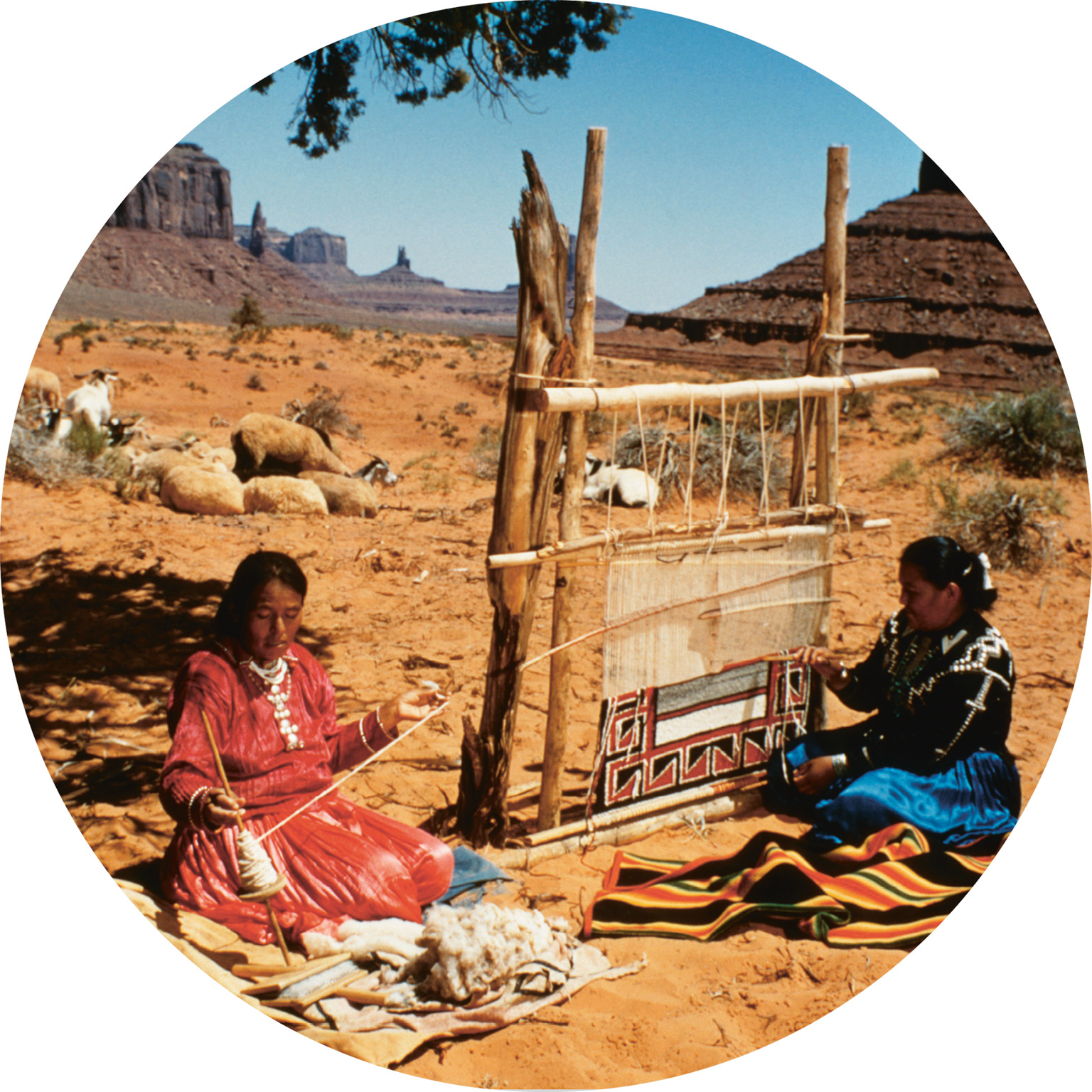
1400The Navajo and Apache migrate from Canada to the Southwest. |
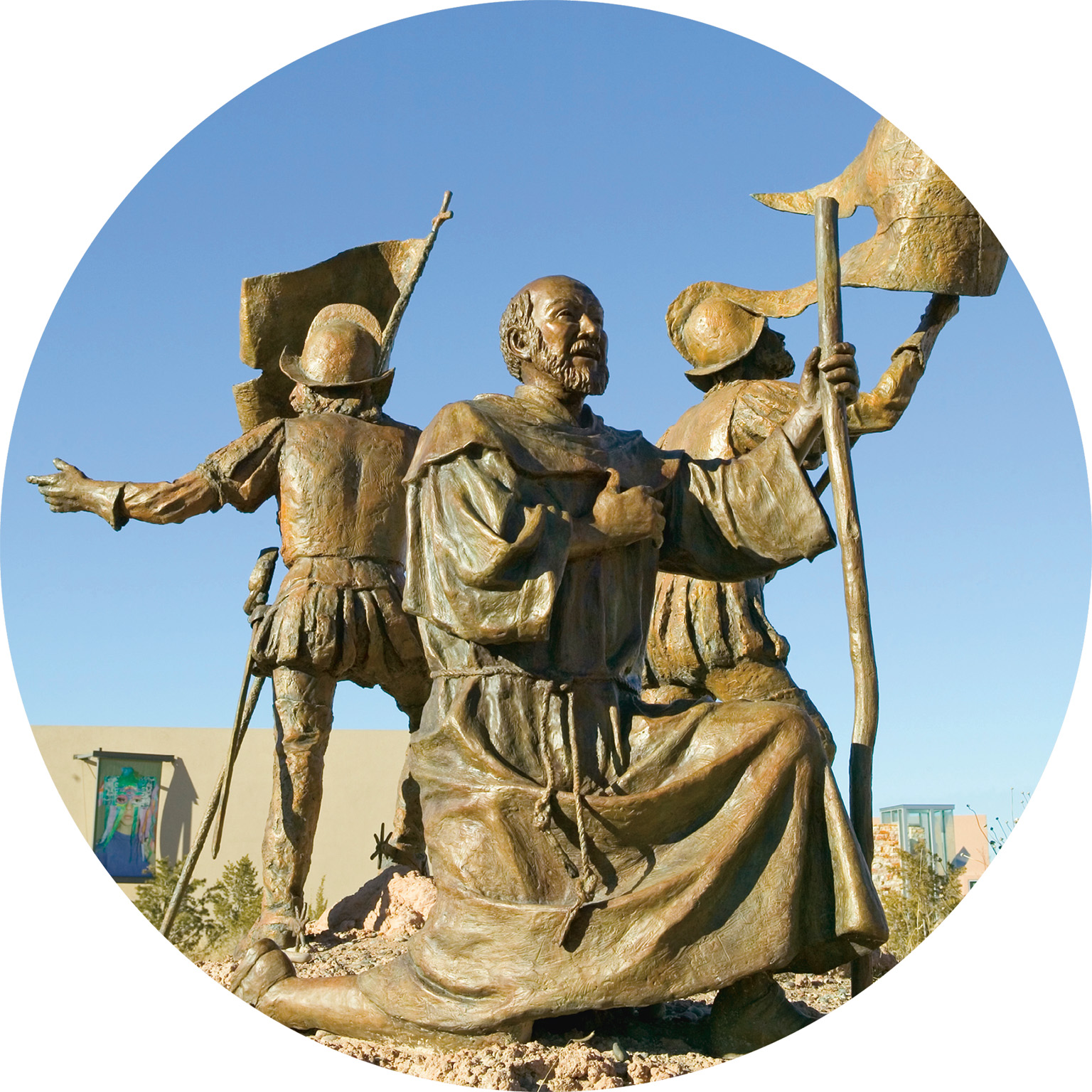
1539The Spanish make their first expedition to the Southwest, headed by Fray Marcos de Niza. |
1540–42Francisco Vázquez de Coronado leads a search for gold in New Mexico. |
1598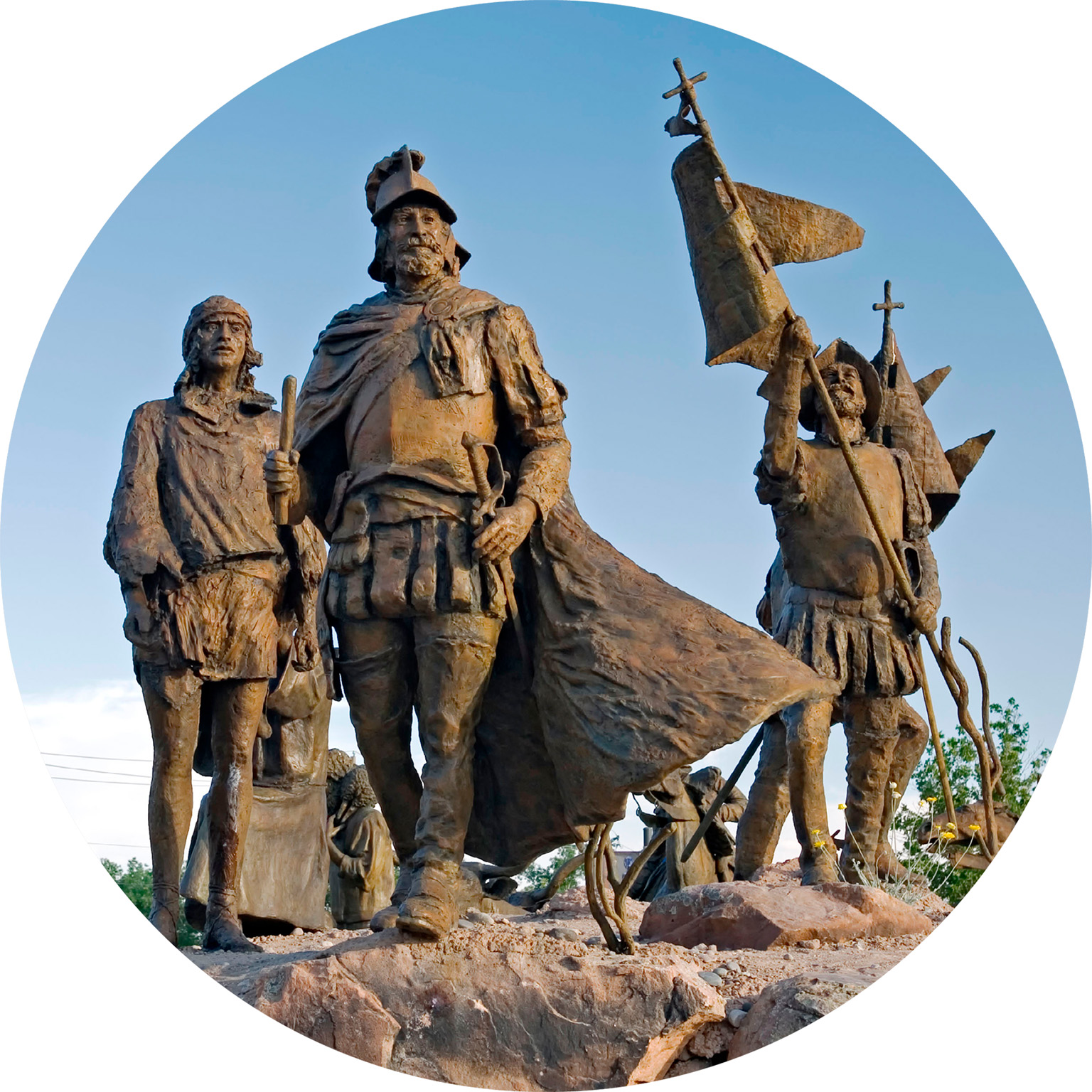
Juan de Oñate founds a permanent colony in New Mexico. |
1680The Pueblo Revolt. |
1803The Louisiana Purchase extends US boundaries to the New Mexico border. |
1810–21Mexican War of Independence. |

1846–48The Mexican War; Treaty of Guadalupe-Hidalgo cedes Mexican territory to US. |
1854The US acquires Southern Arizona with the Gadsden Purchase. |
1861–5US Civil War. |
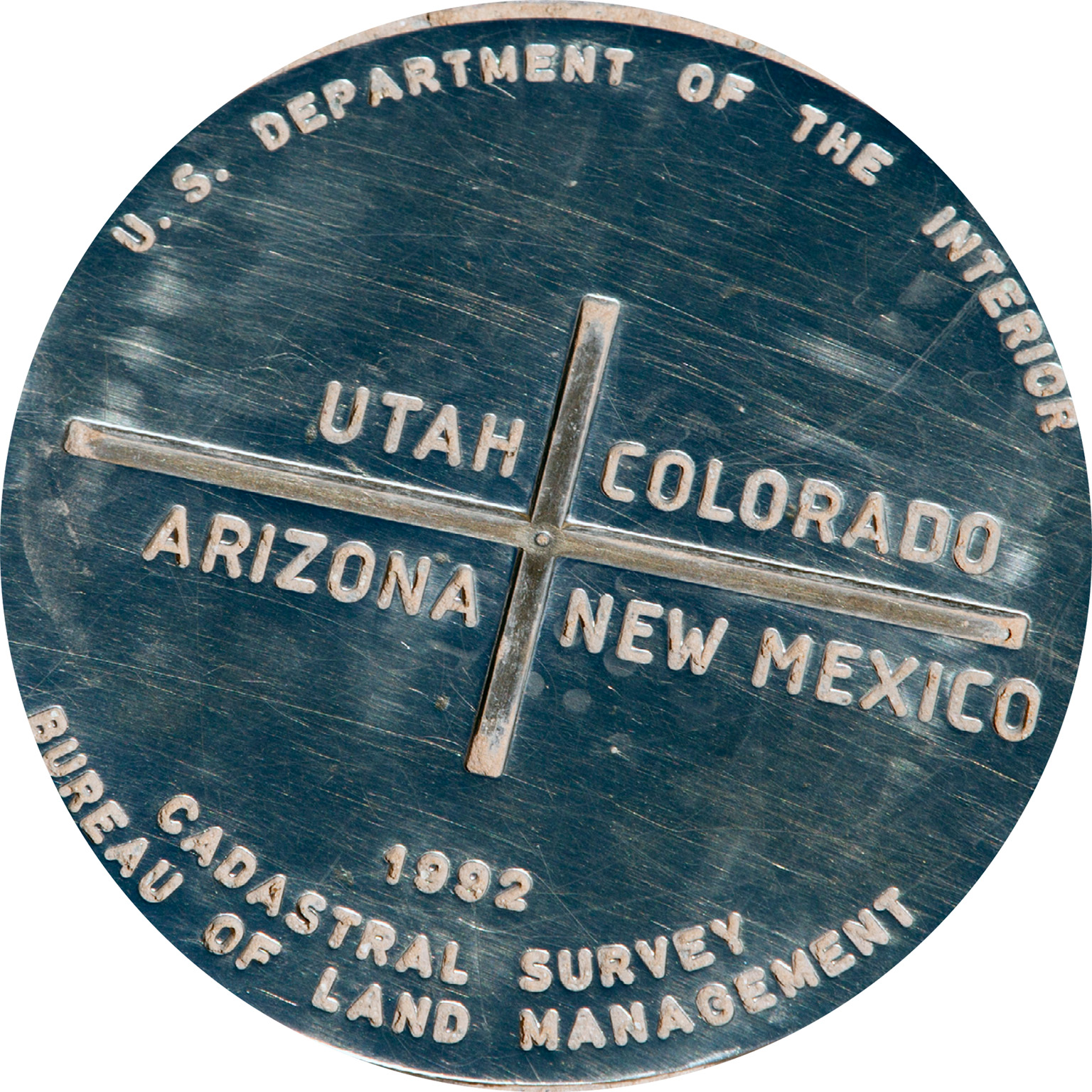
1868Navajo Reservation established in the Four Corners region. |
1869John Wesley Powell leads an expedition on the Colorado River through the Grand Canyon. |

1877Copper found at Bisbee, Arizona; silver discovered at Tombstone, Arizona. |
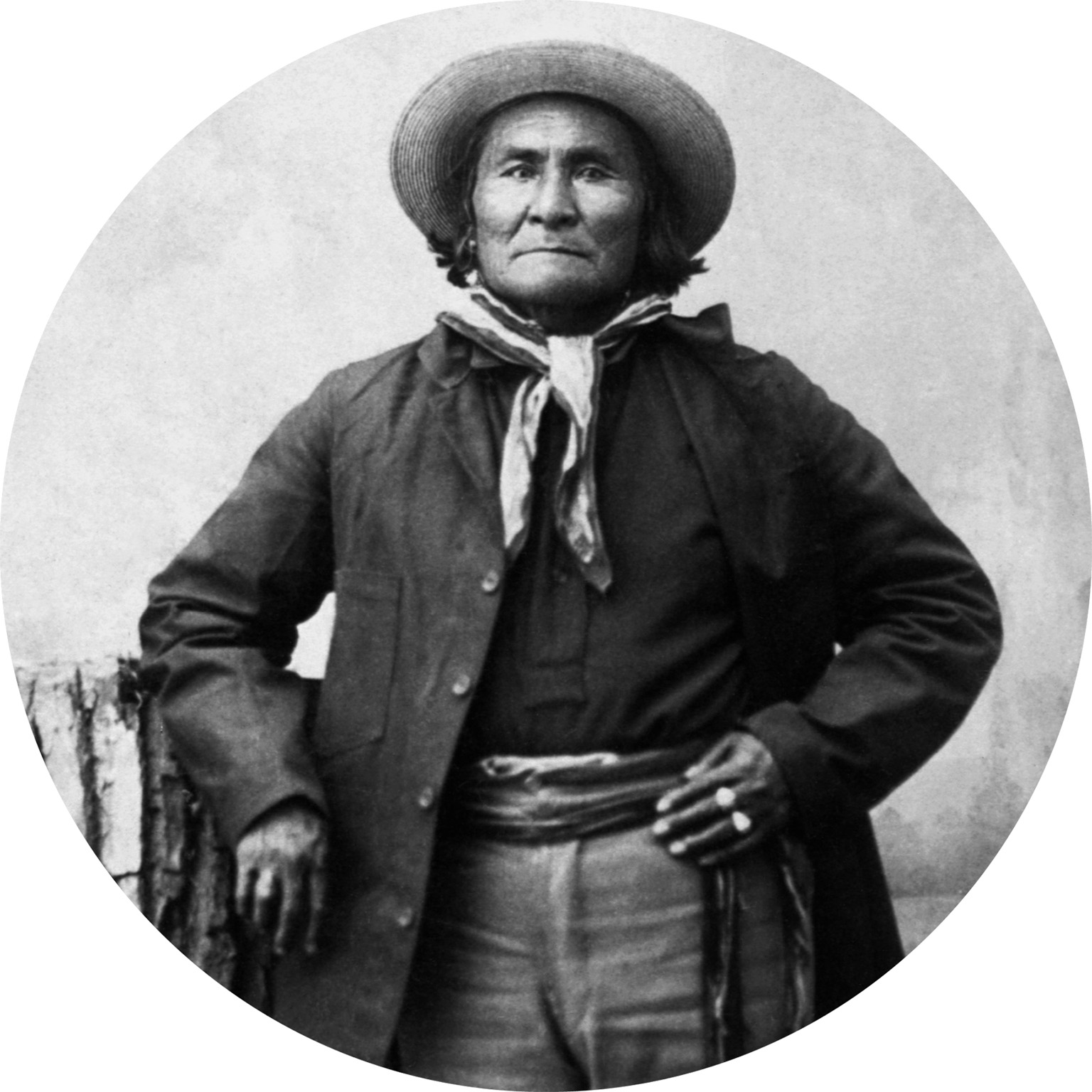
1886Indian Wars end with the surrender of Geronimo. |
1889Phoenix becomes the territorial capital of Arizona. |
1901Grand Canyon Railroad opens, bringing tour-ists to the region. |
1912New Mexico and Arizona become the 47th and 48th states of the Union. |

1917The US enters World War I. |
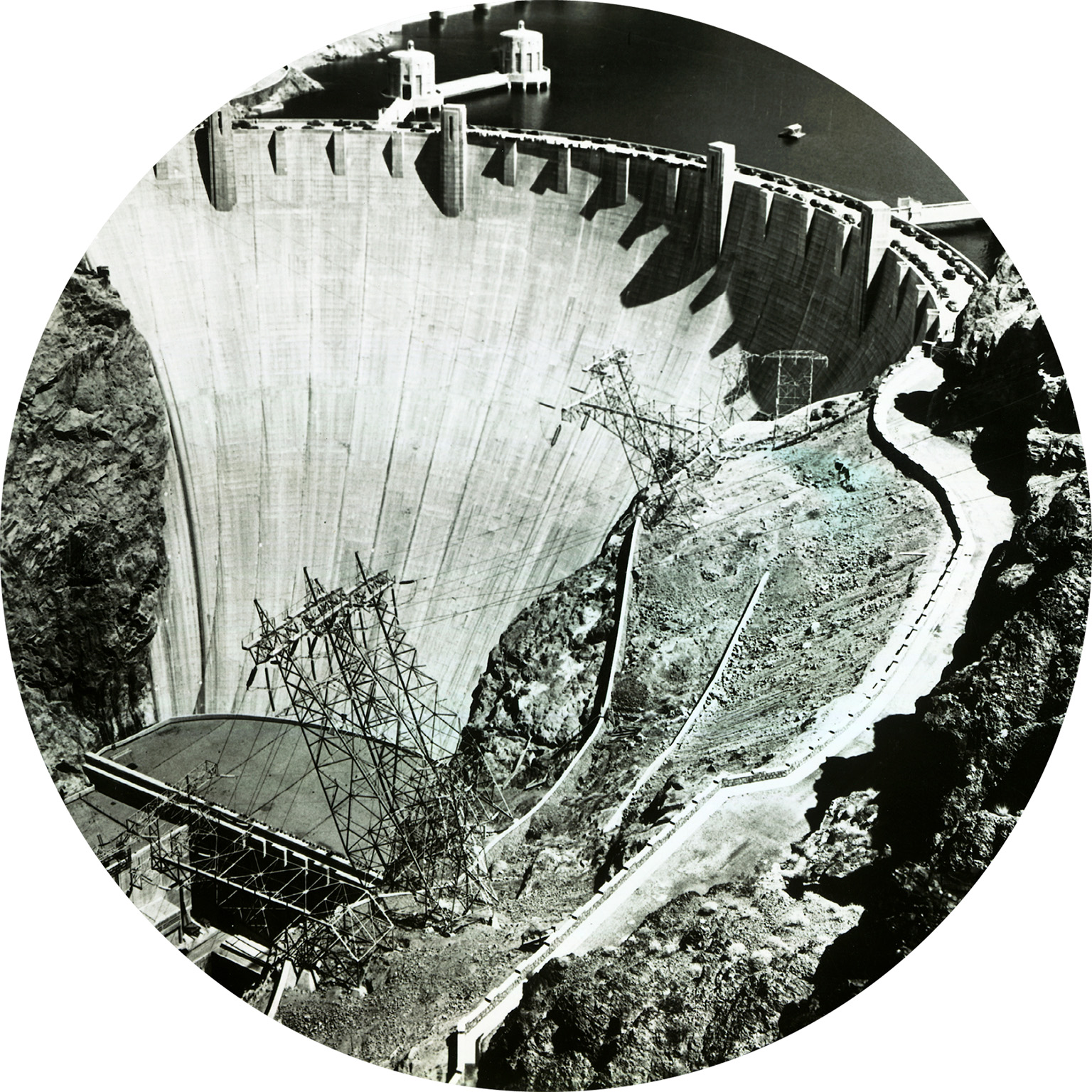
1931–36Hoover Dam constructed in Arizona. |
1941US enters World War II. |
1945First atomic bomb tested at Trinity site in Southern New Mexico. |
1963Opening of the Glen Canyon Dam. |

1982Space Shuttle Columbia lands at White Sands Space Harbor. |
2011Spaceport America built near Las Cruces, New Mexico for commercial space flights. |
